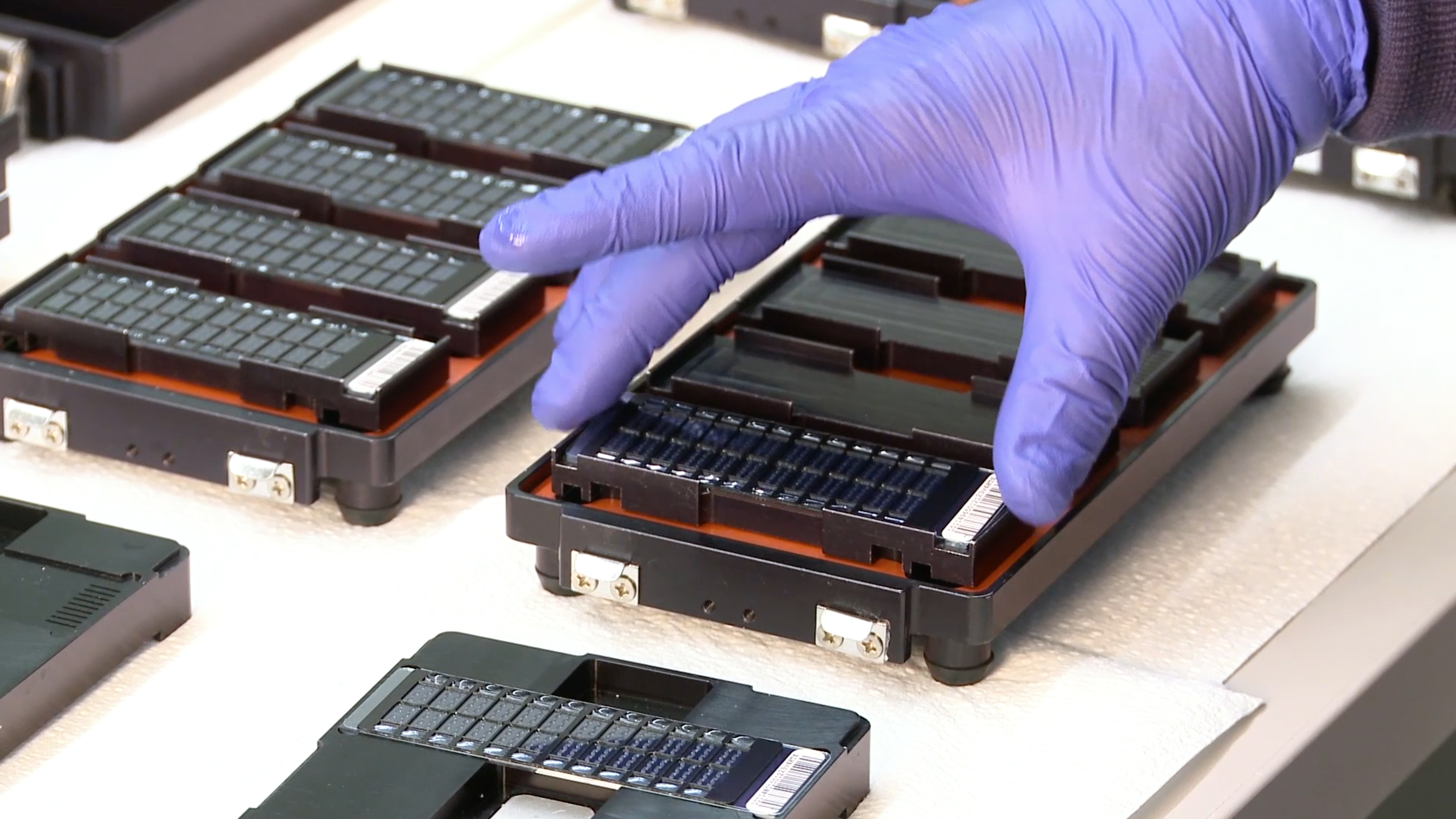DNA test kits for ancestry: how they work and how to choose the right one for you

Who are you? Where are you from? How we identify ourselves is at the core of what it means to be human, and the chance to get easy, quick and affordable answers to these questions has prompted the genetic testing market to be worth almost a $1 billion a year.
The best DNA test kits give you detailed, personalised reports on … what, exactly? Where your ancestors came from? Actually, no. They tell you where your DNA is from today, which can help you research your genetic ancestry and your ethnicity, but they certainly don’t provide the quick-fix you might think. Here’s how DNA tests work, their pros and cons, and how to choose the right one for you.
What are DNA, genes and chromosomes?
Deoxyribonucleic acid (DNA) is two long molecules that carry genetic instructions for cells to work and reproduce. DNA is in all living things. It’s arranged in a ‘double helix’ of two strands that wind around each other. Sections of those strands are called genes, which determine particular characteristics. DNA exists in the nucleus of every cell as chromosomes. There are 46 chromosomes in each cell, 23 from each parent.
However, exactly how DNA is inherited is random. People in the same family – even twin brothers – can inherit different segments of DNA from their parents. Cousins share some DNA and if you sign-up to a DNA testing company’s cousin-matching service you can see your genetic matches pop-up. Get to third cousins and DNA is not much use. Go back several generations and you may share zero DNA with some of your ancestors.
DNA test kits and what they tell you
DNA test kits collect your saliva or cheek swabs, which you then post to a laboratory, which extracts your DNA. Essentially, you spit in a tube or swab each cheek twice with a cotton swab. What you get back – either in the mail or more likely online – is information that appears to show where your ancestors came from. In short, a breakdown of your genetic ancestry; your ethnicity.
But DNA test kits don’t tell you where your ancestors are from. Human history is the history of migration so trying to place your genetic ancestors in a geographic location is inherently problematic.
So how does the process work? Segments of your genome are cross-referenced with others in a database, loosely assigning different bits of your DNA to geographic locations. Companies tend to use reference samples of people that have four grandparents in that region, too, and similar DNA samples from a particular location are clustered. This helps produce a likely connection to a place over long time periods, but a lot of assumptions are made. Your results may not be unique.
Sign up for breaking news, reviews, opinion, top tech deals, and more.

Nevertheless, you’ll be sent information and visuals on the general populations and regions your DNA contains links to. For example, you might learn that you’re 81% European, 9% Asian, but within that data you might be told that you’re 41% English and 40% Welsh, for example. These are estimates based on the size of the company’s databases, and the algorithms and statistical techniques they use.
You might also be told that you’re related to specific other people that have also done a DNA test with that company, with cousin-matching the most common product.
DNA test kit companies and why to use more than one
Leading genetic companies in the industry include AncestryDNA, LivingDNA, Family Tree, MyHeritage and 23andMe. Once you’ve done one test and got the results back you can generally upload your raw DNA data to another testing company to take advantage of their databases and algorithms.

That’s because the results you’re going to get will vary. Over time the various companies’ databases are getting bigger and therefore better, with data from new locations added, while the reference populations used for particular regions also get larger and more reliable. Algorithms, software and AI are also improving. This is why the results you get from a DNA test kit today are much more detailed than they were when they first became available a decade ago – and they’ll be better in the future.
It’s also worth knowing that until recently DNA testing companies have best served people with European ancestry, simply because they’re been most popular in North America and Europe.
The three kinds of DNA tests
There are three different tests for genetic genealogy, each of which will reveal different data about your ancestry:
Autosomal (atDNA): this is by far the most common and most useful DNA test for ancestry and is often just called ‘family finder’ or simply ‘your ancestry’. It can give anyone their ancestors up to about seven generations back and is useful for cousin-matching. It’s therefore used by all DNA testing companies as the default offering.
Chromosome (yDNA): this test uses the Y-chromosome, which is only found in men and passed down the paternal line. The mutations in a man’s yDNA can link him to a genetic population with whom he shares a common ancestor.
Mitochondrial (mtDNA): this one traces your maternal ancestors. It can be taken by anyone. The mutations in your mtDNA can link you to a genetic population with whom you share a common ancestor.
Selecting the right DNA test kit for you
Many DNA testing kits offer genetic readouts on your ancestry as an entry-level product within a wider offering designed to help you investigate your individual family history. It also matches your DNA to new customers, so it can give you new information years after that initial cheek swab you did.
Here are the basic differences between the most popular services – all of which offer autosomal testing as a default – but head over to our best DNA test kits article for full details:
AncestryDNA: Uses a saliva test and has a database of 20 million – the largest of all – and gives access to 30 billion genealogy records for family tree research.
- Read our full AncestryDNA review
Living DNA: uses a cheek swab and has a database of one million. It claims to have data from across Africa so promises better results for African Americans and European Africans. It also specialises in British ancestry.
- Read our full Living DNA review
Family Tree DNA: uses a cheek swab and has a database of 1.4 million so it’s not the best for cousin-matching. For an additional fee, you can have your DNA cross-referenced with its yDNA and mtDNA databases, too.
MyHeritage DNA: uses a cheek swab and has a database of 4.5 million. It also offers access to 12 billion historical records and syncs everything with your family tree research.
- Read our full MyHeritage review
23andMe: costs $99, uses a saliva test and has a database of 12 million – the second-largest. It’s thus good for cousin-matching, 23andMe also offers health results.
- Read our full 23andMe review
Are DNA test kits worth it?
DNA test kits aren't a scam, but you need to know their limitations and realise that they’re actually a spin-off of much broader ambitions. For example, researchers are using anonymised DNA test results to create maps of human migration patterns, but also to develop personalized and population-based healthcare, partly by identifying people at risk from genetic conditions. For population-genetic modelling the growth of DNA test kits is great news.
However, what DNA test kits don’t do is give simple, quick and 100% reliable information about where a specific individual’s ancestors came from. So if you’re researching your family tree, by all means get a DNA test kit and feed the results into your own research. But if you’re only after a quick DNA-based sense of identity – confirmation of your own unique heritage and ancestral roots – DNA test kits are not going to give you enough accuracy for that.
- We've tested and rated the best fitness trackers
- Check out our review of CircleDNA

Jamie is a freelance tech, travel and space journalist based in the UK. He’s been writing regularly for Techradar since it was launched in 2008 and also writes regularly for Forbes, The Telegraph, the South China Morning Post, Sky & Telescope and the Sky At Night magazine as well as other Future titles T3, Digital Camera World, All About Space and Space.com. He also edits two of his own websites, TravGear.com and WhenIsTheNextEclipse.com that reflect his obsession with travel gear and solar eclipse travel. He is the author of A Stargazing Program For Beginners (Springer, 2015),